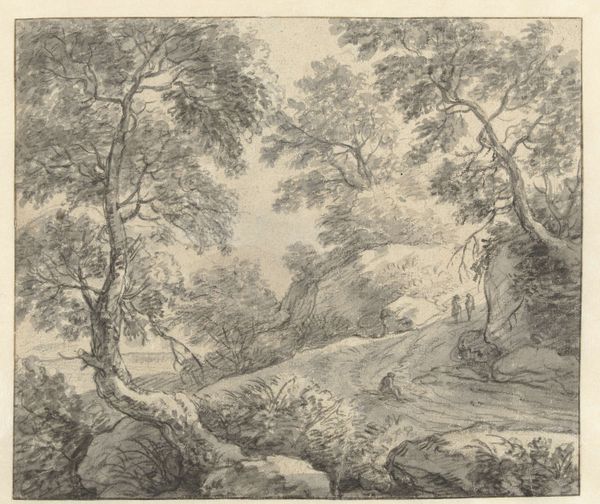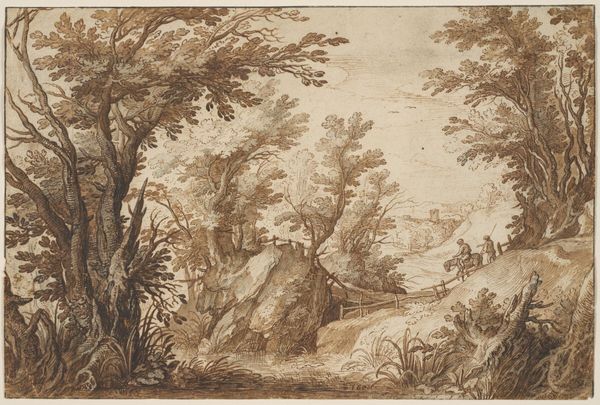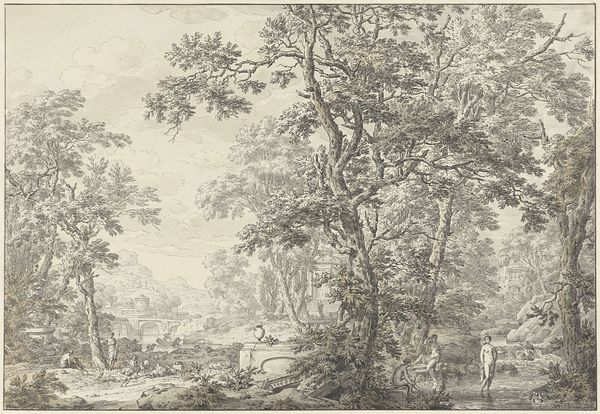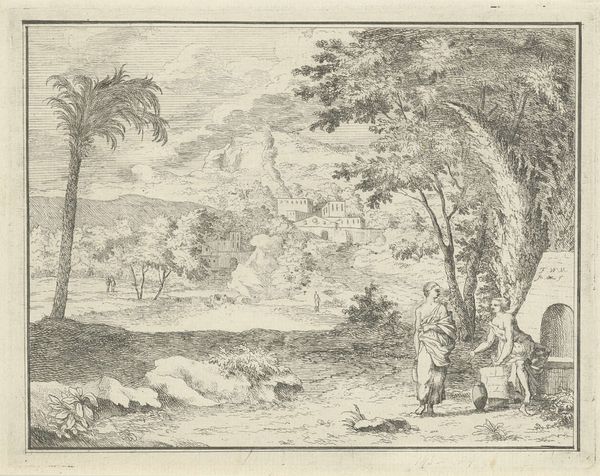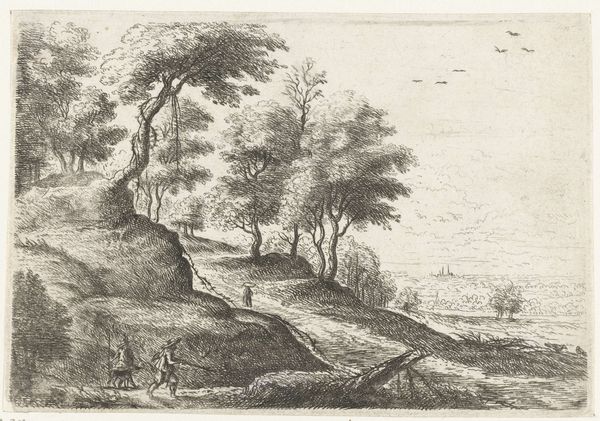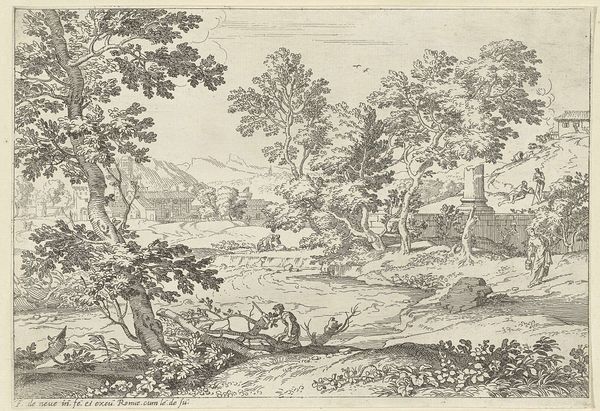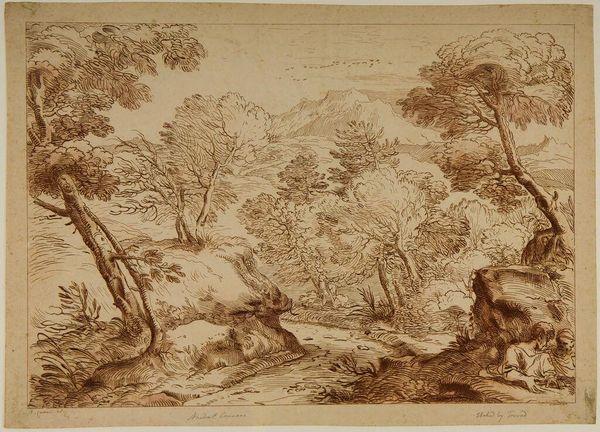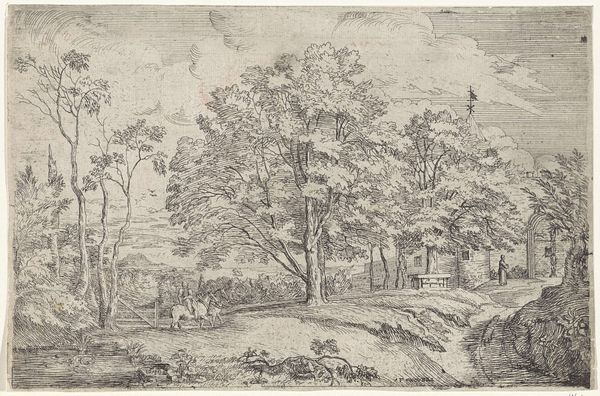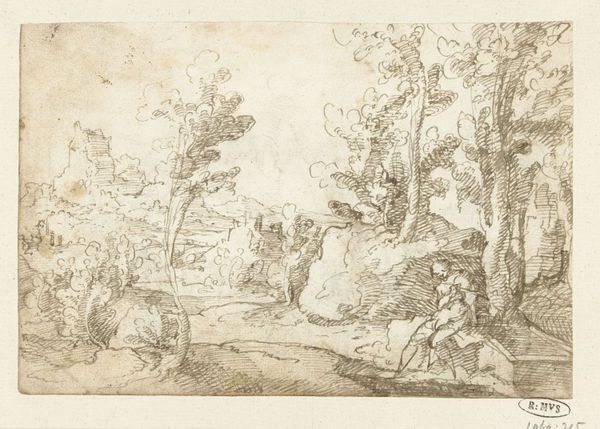
drawing, print, etching
#
drawing
#
dutch-golden-age
# print
#
etching
#
landscape
Dimensions: height 163 mm, width 262 mm
Copyright: Rijks Museum: Open Domain
Claes Jansz Visscher created this landscape scene using etching, a technique that allowed for detailed, reproducible images, around the early to mid-17th century. Visscher lived during the Dutch Golden Age, a period of economic prosperity and artistic flourishing in the Netherlands. This idyllic scene of figures in a forest landscape reflects the era's evolving relationship with the natural world. In the 17th century, forests were not only sources of resources but also spaces for recreation. The way that Visscher depicts ordinary people enjoying nature suggests emerging social structures around leisure. Look at the figure seated in the foreground, with a dog, and the walking figures dispersed in the image. However, this romanticized vision of nature often obscures the realities of class and labor. Who had access to these spaces, and for what purposes? How does the image reflect or mask social inequalities? These are some of the questions we might ask ourselves when looking at this etching.
Comments
No comments
Be the first to comment and join the conversation on the ultimate creative platform.
